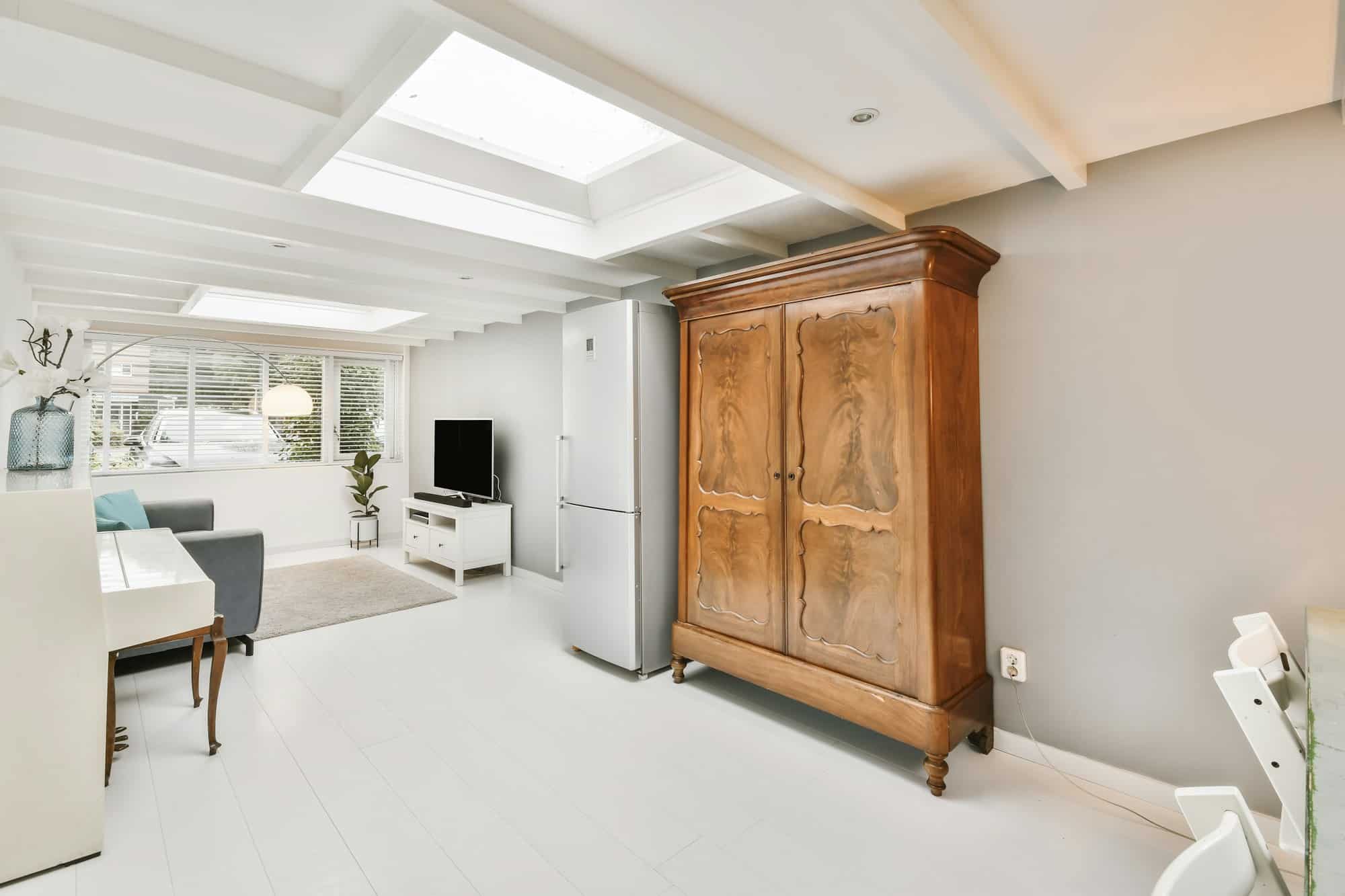What Are the Best Practices for Installing a Skylight in a Low-Slope Roof?

Skylights can be an essential feature in your home, completely transforming a room by letting in a flood of natural light. They can offer the benefit of additional sunshine in the winter and ventilation in the summer. You may consider installing one on your own, but the process can be somewhat more complex than other home improvement projects. This article will guide you through the best practices for installing a skylight in a low-slope roof.
1. Step-By-Step Guide to Skylight Installation
Installing a skylight involves more than just cutting a hole in your roof. It’s a delicate process that requires careful planning, precise measurements, and proper installation techniques.
A découvrir également : How to Maximize Space in a Small Dining Room with Multi-Functional Furniture?
-
Planning: Before making any cuts, plan where the skylight will go. Consider factors like the path of the sun during different seasons and which rooms could benefit most from natural light.
-
Cutting: After settling on the location, it’s time to cut a hole. You will need to cut through the roofing material and the roof deck, but remember not to cut any rafters.
Sujet a lire : How to Design an Eco-Friendly Nursery That Stimulates Child Development?
-
Frame the Opening: Next, frame the opening. You will need to install header joists across the ends of the opening to provide support.
-
Install the Skylight: With the frame ready, carefully place the skylight into the opening. For flat roofs, a curb is typically required to elevate the skylight above the roof surface.
-
Sealing and Flashing: After installing the skylight, it’s vital to seal it properly. Use a waterproof sealant around the edges and install flashing to divert water away from the opening, preventing leaks.
-
Interior Finishing: Lastly, finish the interior portion of the skylight. Add insulation, drywall, and paint as needed.
Remember, each step is critical to ensuring a successful installation and preventing future issues such as leaks or heat loss.
2. Understanding the Importance of Curb and Flashing
The curb and flashing are two essential components when installing a skylight on a low-slope or flat roof.
A curb is a frame that elevates the skylight above the level of the roof. It creates a raised platform where the skylight is mounted. Curbs are usually made from 2x4s or 2x6s and must be constructed to fit the exact dimensions of your skylight.
Flashing is used around the edges of the skylight to prevent water from getting in. It’s typically made of metal and is designed to channel water away from the skylight and onto the roof’s surface.
It’s crucial to install the curb and flashing correctly. If not, water can seep in, potentially causing damage to the inside of your home.
3. Choosing the Right Glass Glazing for Your Skylight
Another critical aspect of installing a skylight is choosing the right type of glass or glazing. The type of glazing affects how much light and heat your skylight lets in and can make a big difference in your home’s comfort and energy efficiency.
Single-glazed skylights are the most basic type and consist of a single pane of glass. They let in a lot of light and heat but offer the least amount of insulation.
Double-glazed skylights consist of two panes of glass with a layer of air or gas in between. This design provides better insulation than single-glazed skylights, resulting in less heat loss in winter and less heat gain in summer.
Low-E glass skylights have a special coating that reflects heat while letting light in. They are the most energy-efficient type of skylight.
When choosing a skylight, consider your specific needs and the climate in your area.
4. Regular Maintenance and Care for Your Skylight
Once installed, it’s important to carry out regular maintenance on your skylight to ensure its longevity and performance.
Check for any signs of leaks or water damage, especially after heavy rains or snow. Regularly clean the glass to ensure it remains clear and allows maximum light into your home.
Keep the skylight’s frame clean and free from debris, as this can lead to water pooling and potential damage. Remember to inspect the flashing for any signs of deterioration or damage.
Inspect your skylight at least twice a year and after severe weather events. Regular maintenance will help you spot any problems early and address them before they become significant issues.
5. Considerations When Installing a Skylight
Finally, there are several factors to consider when installing a skylight.
First, consider the orientation of your home and the path of the sun. The amount of light and heat that enters your home through the skylight will depend on its location.
Next, consider your roof’s structure and material. Some materials, like metal or tile, require a professional for installation.
Moreover, consider the energy efficiency of the skylight. Energy-efficient skylights can help reduce heat gain in summer and heat loss in winter, potentially saving you on energy bills.
Last but not least, consider hiring a professional if you’re unsure about any aspect of the installation process. Skylight installation is a significant project that requires precise measurements and installation techniques to ensure a leak-proof and energy-efficient result. Don’t hesitate to call in a professional to make sure the job is done right.
Remember, a well-installed skylight can enhance the comfort and aesthetic of your home, so it’s worth taking the time to do it right.
6. Common Mistakes to Avoid in Skylight Installation
Every home improvement project comes with its share of potential pitfalls, and skylight installation is no different. Being aware of these common mistakes can save you from unnecessary headaches in the long run.
A very common mistake is improper sizing. Before you cut a hole in your roof, it’s important to ensure that the skylight fits perfectly. Measure twice, cut once should always be your motto when installing a skylight. A skylight that is too large or too small can lead to leaks or structural problems with your roof deck.
Another common issue is poor placement. Skylights should be installed in locations that make the most out of the natural light available. Placing a skylight on a north-facing roof, for instance, may not bring in as much light as a south-facing one. It’s crucial to consider the sun’s path and your home’s orientation before starting the installation process.
One more mistake to avoid is skimping on materials. Opting for low-cost, low-quality materials can lead to problems down the road, such as leaks and heat gain. It’s crucial to invest in quality materials, such as double-glazed or low-E glass skylights, to ensure energy efficiency and durability.
Lastly, ignoring the importance of proper sealing and flashing is a common mistake in skylight installation. Flashing is crucial to prevent leaks, and should be installed correctly around the skylight. Similarly, a well-sealed skylight will ensure no unwanted air or water gets in.
Avoiding these common mistakes will help ensure a successful skylight installation, allowing you to enjoy your new source of natural light without worry.
7. Conclusion: Enhance Your Home with Properly Installed Skylights
In conclusion, installing a skylight in a low-slope or flat roof requires careful planning, precise measurements, and the right materials. From choosing the right location to understanding the importance of a curb mounted skylight and proper flashing, each step is critical to ensure a leak-free and energy-efficient installation.
Consider the type of glazing that best suits your needs and climate, and don’t forget to maintain your skylight regularly to keep it in top shape. Be aware of common mistakes to avoid during skylight installation, and consider hiring a professional if necessary.
Well-installed roof skylights can dramatically transform your living space, flooding rooms with abundant natural light, enhancing energy efficiency, and adding an aesthetically pleasing element to your home. By following these best practices for skylight installation, you can enjoy all the benefits skylights have to offer while increasing the value of your home. Installing skylights in your home is undoubtedly an investment worth making.
